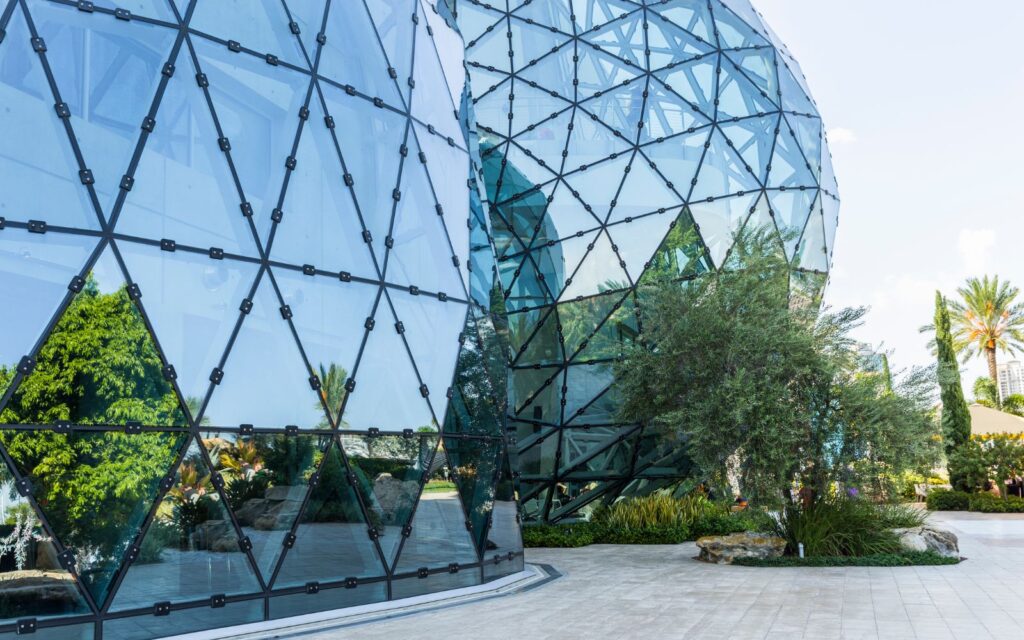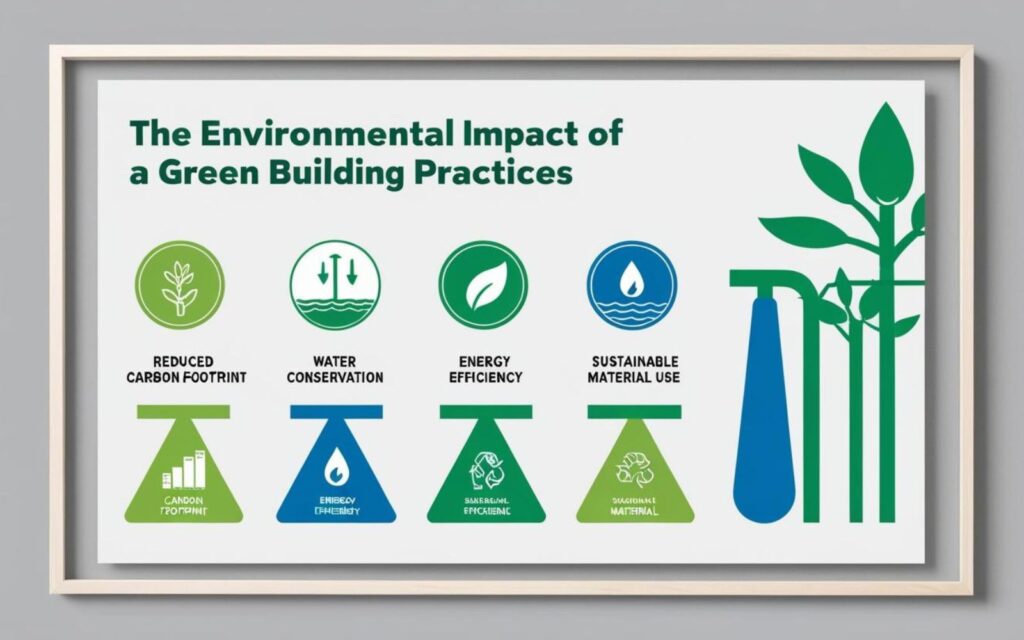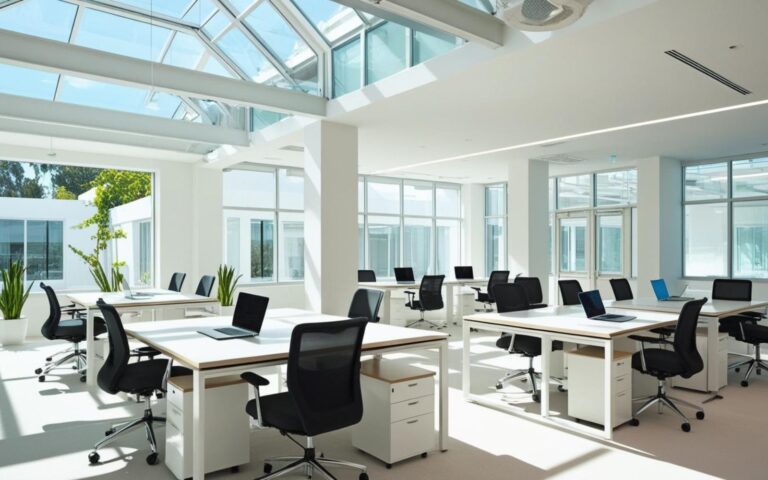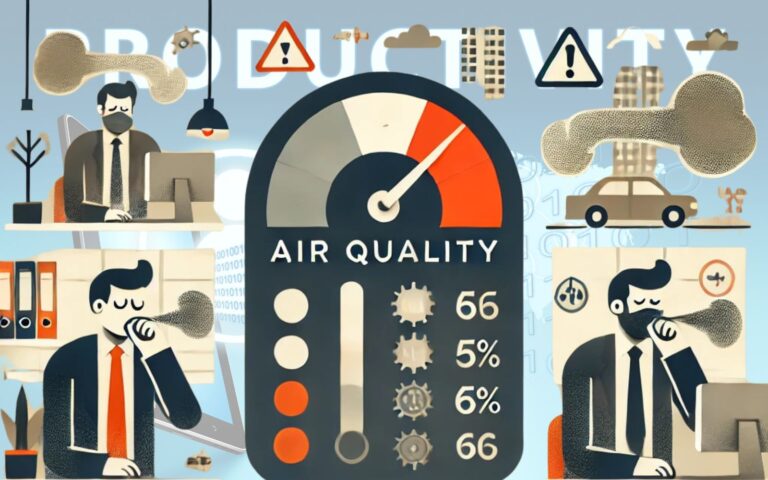The Benefits of Green Buildings on Air Quality: Transform Eco-Friendly Breathing Spaces

Ever think about how the buildings around us impact the air we breathe? It’s more significant than you might realize.
The benefits of green buildings on air quality are not only about making structures look better or saving money on utilities. They’re also about creating healthier environments, inside and out.
Green buildings aim to improve air quality by using sustainable materials, reducing energy consumption, and incorporating designs that promote better ventilation.
These practices help decrease the presence of harmful pollutants, leading to healthier indoor environments and cleaner outdoor air.
Let’s dive into how the benefits of green buildings extend to air quality and human health.
Key Takeaways
- Green buildings improve indoor air quality by minimizing pollutants like volatile organic compounds (VOCs).
- Using sustainable materials and proper ventilation helps reduce indoor air pollution.
- Energy efficiency measures in green buildings contribute to lower greenhouse gas emissions.
- Features like green roofs and renewable energy use further enhance air quality.
- Better air quality leads to significant health benefits for occupants.
Understanding Green Buildings

What Are Green Buildings?
Green buildings are designed to reduce their negative impacts on the environment and promote a healthier indoor environment for occupants.
To achieve this, they utilize sustainable design principles, energy-efficient systems, and eco-friendly construction materials. Key elements of green buildings include:
- Energy efficiency: Minimizes energy consumption through efficient appliances, lighting, and heating/cooling systems.
- Water conservation: Implements systems to reduce water usage, such as low-flow fixtures.
- Sustainable materials: Uses eco-friendly, low-VOC materials that don’t release harmful pollutants.
- Improved air quality: Incorporates ventilation systems and natural light to maintain air quality.
Why Do Green Buildings Matter for Air Quality?
Buildings account for a significant portion of energy use and air pollution, especially in urban areas.
Conventional buildings often contribute to poor air quality due to the emissions from heating, cooling, and lighting and the off-gassing of toxic chemicals from building materials.
In contrast, green buildings are designed to enhance indoor environmental quality while lowering outdoor air pollution through sustainable practices.
Improving Indoor Air Quality

Reducing Indoor Pollutants
Green buildings aim to maintain air quality using materials emitting fewer harmful substances.
Conventional construction often involves materials that release VOCs and other indoor pollutants, negatively impacting occupant health.
Using low-VOC materials such as paints, sealants, and adhesives significantly reduces indoor air pollution in green buildings.
Sustainable materials like formaldehyde-free insulation or recycled construction products contribute to a healthier indoor environment.
Effective Ventilation Systems
Ventilation systems play a crucial role in maintaining air quality inside green buildings. Proper ventilation helps to filter out indoor air pollutants and introduce fresh, clean air. Some features used to achieve this include:
- Mechanical ventilation with heat recovery (MVHR): Balances temperature and air exchange to improve energy performance and indoor air quality.
- Natural ventilation strategies: Green building design often incorporates windows and vents that can be manually adjusted, allowing for natural airflow and reducing the need for mechanical systems.
- High-efficiency particulate air (HEPA) filters capture fine particles and allergens, ensuring better indoor air.
Controlling Humidity and Moisture
Excess moisture in buildings can lead to mold growth, a major contributor to poor air quality. Green buildings are designed to control moisture levels using water-resistant materials and installing systems to manage humidity effectively.
This helps maintain good indoor air quality and prevents mold-related health problems.
Enhancing Outdoor Air Quality

Lowering Greenhouse Gas Emissions
Green buildings contribute to reducing greenhouse gas emissions by using renewable energy sources, such as solar or wind power.
This shift to clean energy lowers carbon dioxide emissions and decreases the overall environmental impact.
The reduced reliance on fossil fuels benefits air quality and supports broader sustainable development goals.
Green Roofs and Living Walls
Vegetation plays a crucial role in improving outdoor air quality around green buildings. Incorporating green roofs and living walls helps filter air pollutants and cool down surrounding areas. Benefits of these features include:
- Reduction in the urban heat island effect: Green roofs lower surrounding temperatures, which can reduce energy consumption for cooling.
- Enhanced biodiversity: Creates habitats for wildlife, contributing to a more balanced natural environment.
- Absorption of air pollutants: Plants naturally filter pollutants like carbon dioxide and nitrogen oxides.
Supporting Sustainable Transportation
Green buildings often promote sustainable transportation options, such as bike storage, electric vehicle charging stations, and access to public transit.
This approach helps reduce the number of vehicles on the road, lowering air pollution and greenhouse gas emissions.
The Health Benefits of Green Buildings

Creating a Healthier Indoor Environment
Good indoor air quality directly affects occupant health. By reducing exposure to indoor air pollutants, green buildings can minimize respiratory problems, allergic reactions, and other health issues. This leads to:
- Reduced incidence of sick building syndrome: Occupants experience fewer headaches, fatigue, and irritation linked to poor air quality.
- Better cognitive performance: Clean air supports higher concentration levels and mental function.
- Lower risk of chronic illnesses: Less exposure to harmful substances helps prevent long-term health problems like asthma and heart disease.
Enhancing Well-Being and Comfort
The benefits of green building practices extend beyond physical health. Natural lighting, proper ventilation, and comfortable indoor temperatures contribute to well-being.
Occupants in green buildings often report higher satisfaction and comfort levels, boosting productivity and morale.
The Environmental Impact of Green Building Practices

Long-Term Sustainability
The shift towards green building practices supports sustainable development by conserving resources and reducing waste.
Energy-efficient buildings consume less power and water, significantly reducing resource depletion. The environmental benefits include:
- Lower energy costs: Energy-efficient buildings reduce utility expenses over time.
- Less construction debris: Green building projects often aim to minimize waste by using recyclable materials.
- Conservation of natural resources: Efficient energy use and sustainable materials reduce the strain on the planet’s resources.
Reduced Negative Impacts
Traditional construction methods often produce significant waste and pollution. Green buildings seek to minimize these negative impacts by integrating sustainable design principles and using eco-friendly building elements.
This reduces the environmental footprint of the built environment and supports efforts to combat climate change.
Promoting Green Building Practices

Encouraging Green Building Certification
Certifications like LEED (Leadership in Energy and Environmental Design) and programs from the Environmental Protection Agency and World Green Building Council help promote sustainable building standards.
These certifications encourage the use of green building design principles by offering benefits such as:
- Tax incentives and rebates: Financial rewards for meeting energy efficiency and sustainability goals.
- Recognition for sustainable construction: Certified buildings often gain recognition for promoting environmental protection.
- Faster approval processes: Some jurisdictions offer expedited permits for green building projects.
Raising Awareness About the Benefits
Increasing public understanding of the benefits of green buildings on air quality can help drive demand for sustainable construction. Awareness campaigns can emphasize:
- Health benefits of good indoor air quality
- Economic advantages, such as cost savings from lower energy consumption
- Successful green building projects that showcase improved air quality and sustainability
Investing in Research and Innovation
Ongoing research and technological advancements are crucial for making green buildings more affordable and accessible.
Innovation in materials, energy systems, and construction techniques can help reduce costs and improve sustainable design quality.
Summary
The benefits of green buildings on air quality are undeniable. These buildings use sustainable materials, effective ventilation systems, and natural design elements to reduce indoor and outdoor pollutants.
Green buildings provide significant health and environmental benefits by improving indoor environmental quality, lowering greenhouse gas emissions, and promoting sustainable practices.
Embracing green building practices is a step toward a cleaner, healthier, and more sustainable future.
Frequently Asked Questions
How Do Green Buildings Improve Air Quality?
Green buildings improve air quality by using low VOC materials, advanced ventilation systems, and incorporating features like green roofs to filter air. This reduces indoor air pollution and helps maintain a healthier environment.
What Is LEED Certification, and Why Is It Important?
LEED (Leadership in Energy and Environmental Design) is a certification system for sustainable buildings.
It recognizes structures that meet high standards for energy efficiency, indoor air quality, and resource conservation.
Are Green Buildings More Expensive?
Green buildings may cost more due to sustainable materials and advanced technology.
However, they offer long-term cost savings through reduced energy and water usage and health benefits from better air quality.
Can Green Buildings Help Combat Climate Change?
Green buildings significantly address climate change by lowering greenhouse gas emissions, reducing energy consumption, and using renewable energy sources.
How Do Green Roofs Contribute to Air Quality?
Green roofs help reduce air pollution by absorbing carbon dioxide and filtering other pollutants.
They also lower temperatures in urban areas, reducing the need for air conditioning and energy use.





